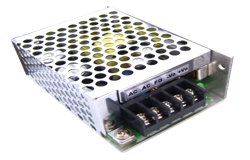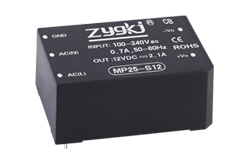nouvelles
Exploring the Efficiency and Performance of Bidirectional DC-DC Converters
Auteur: Module d'alimentation ZYG Time: 2023-7-11
Introduction:
Bidirectional DC-DC converters have gained significant attention in recent years due to their ability to efficiently transfer power bidirectionally between two different DC voltage sources. These converters are crucial in various applications, including renewable energy systems, electric vehicles, and energy storage systems. This article aims to explore the efficiency and performance of bidirectional DC-DC converters, shedding light on their advantages, challenges, and potential improvements.
1. Working Principle of Bidirectional DC-DC Converters:
Bidirectional DC-DC converters, also known as buck-boost converters, use power semiconductors to convert DC voltage from a source to a desired voltage level. These converters can work in both step-up (boost) and step-down (buck) modes, allowing power to flow in either direction. By employing appropriate control algorithms, bidirectional converters enable efficient power transfer between multiple sources.
2. Advantages of Bidirectional DC-DC Converters:
2.1. Energy Efficiency: Bidirectional converters ensure efficient power transfer, minimizing energy losses during conversion. This feature is particularly crucial in renewable energy systems, where energy conservation is paramount.
2.2. Improved Stability: Bidirectional converters offer improved stability compared to unidirectional converters by allowing the transfer of power between different DC voltage sources.
2.3. Enhanced Power Flow Control: With bidirectional converters, power can be regulated and distributed appropriately, facilitating optimal power flow management in complex systems.
3. Challenges and Limitations:
3.1. Voltage and Current Stresses: Bidirectional converters may experience increased voltage and current stresses during operation, which can result in reduced efficiency and reliability.
3.2. Control Complexity: Effective control algorithms are essential for bidirectional converter operation. However, designing and implementing these algorithms can be challenging due to their complexity.
3.3. Electromagnetic Interference (EMI): Bidirectional converters can introduce high-frequency noise and EMI, which can impact the performance of other electronic components in the system.

4. Recent Developments and Improvements:
4.1. Soft-Switching Techniques: Implementing soft-switching techniques in bidirectional converters can reduce voltage and current stresses, improving overall efficiency and reliability.
4.2. Advanced Control Strategies: Advanced control strategies, such as predictive control and model-based algorithms, can enhance bidirectional converter performance and stability.
4.3. Integrated Power Modules: Integration of power semiconductor devices with other passive components can minimize parasitic elements, reducing EMI and improving overall system efficiency.
5. Conclusion:
Bidirectional DC-DC converters play a crucial role in various applications, providing efficient power transfer between multiple DC voltage sources. Despite the challenges and limitations, recent developments in soft-switching techniques, advanced control strategies, and integrated power modules have significantly improved the efficiency and performance of bidirectional converters. Further research and development efforts are needed to optimize these converters for various emerging applications, ensuring a sustainable and efficient power transfer in the future.
Précédent: Introducing the SP Series AC DC Converter: Unleashing Efficient Power Conversion
Prochain: Bidirectional DC-DC Converter: The Future of Efficient Energy Conversion
les informations pertinentes
-
2023-5-2
Industrial AC-DC Converter for Efficient Power Conversion
In modern industry, efficient power conversion is essential for the smooth operation of various devices and machinery. One of the critical components in this process is the AC-DC converter. An industrial AC-DC converter is a device that converts alternating current (AC) power into direct current (DC) power. This essential component is used in a broad range of industries, including manufacturing, transportation, and energy production. The primary function of the industrial AC-DC converter is to regulate and convert the incoming AC power to a DC output that is suitable for powering the equipment or machinery. In most cases, the incoming AC power is at a higher voltage than the equipment or machinery requires. Therefore, the AC-DC converter reduces the voltage to...
Voir les détails -
2023-6-15
Revolutionizing Power Management with Bi-Directional Converters
In recent years, the demand for more efficient and reliable power management systems has grown significantly. One solution to this problem is the use of bi-directional converters. These converters have the ability to transfer power in both directions between two different DC power sources, making them ideal for a wide range of applications. Bi-directional converters are particularly useful in renewable energy systems, where the energy generated from sources like solar or wind power can be stored and used when needed. By using bi-directional converters, excess energy can be stored in batteries or fed back into the grid, providing a more efficient and sustainable energy solution. One major advantage of bi-directional converters is their ability to minimize power loss. Traditionally, power...
Voir les détails -
2023-4-20
How to Differentiate Between an AC and DC Power Supply
In the world of electronics, power supply is a critical component that ensures the smooth functioning of the device. The two most common types of power supply are AC and DC. Although both types of power supply serve the same purpose, they differ significantly in terms of their properties and applications. In this article, we will discuss how to differentiate between an AC and DC power supply. AC Power Supply AC stands for Alternating Current, which indicates that the flow of electrons constantly changes direction. AC power is the type of electrical energy commonly used in homes, offices, and industries. The primary source of AC power is the electrical grid that delivers power to our homes and businesses. AC power...
Voir les détails -
2023-10-9
The Ultimate Guide to Choosing the Best Modular PC Power Supply
When it comes to building a high-performance PC, one of the most critical components to consider is the power supply. The power supply unit (PSU) is responsible for providing electrical power to all the components in your computer, and choosing the right one can significantly impact its performance and reliability. In recent years, modular power supplies have gained popularity among PC enthusiasts due to their flexibility and ease of installation. Unlike non-modular power supplies, modular PSUs allow you to connect only the cables you need, reducing cable clutter and improving airflow inside your PC case. However, with a wide variety of options available on the market, selecting the best modular power supply can be a daunting task. This guide will...
Voir les détails -
2023-6-12
Bidirectional DC-DC Converter: Efficient Power Conversion in Both Directions
The need for efficient power conversion is becoming increasingly important in today's world. As the demand for energy continues to grow, it is essential to find ways to optimize power conversion in various systems. One such system that requires efficient power conversion is the bidirectional DC-DC converter. The bidirectional DC-DC converter is a type of power converter that can transfer energy in both directions. This means that it can convert DC voltage from a source to a load, and also from a load to a source. This bidirectional functionality is particularly useful in applications where energy needs to be transferred back and forth between two sources, such as in hybrid electric vehicles and renewable energy systems. The efficiency of power...
Voir les détails -
2023-5-12
240V AC to 12V DC Converter manufacture
A 240V AC to 12V DC converter is an essential device that converts high voltage alternating current (AC) into low voltage direct current (DC). It is used in various electronic devices that require a low voltage power source, such as LED lights, Arduino boards, and other electronic devices. The converter is designed to take the input voltage of 240V AC and step down the voltage to 12V DC. This is achieved through a process called rectification and voltage regulation. The process involves converting the AC voltage to DC voltage through a diode and then using a voltage regulator to regulate the output voltage to a stable 12V DC. The 240V AC to 12V DC converter is commonly available in two...
Voir les détails


















